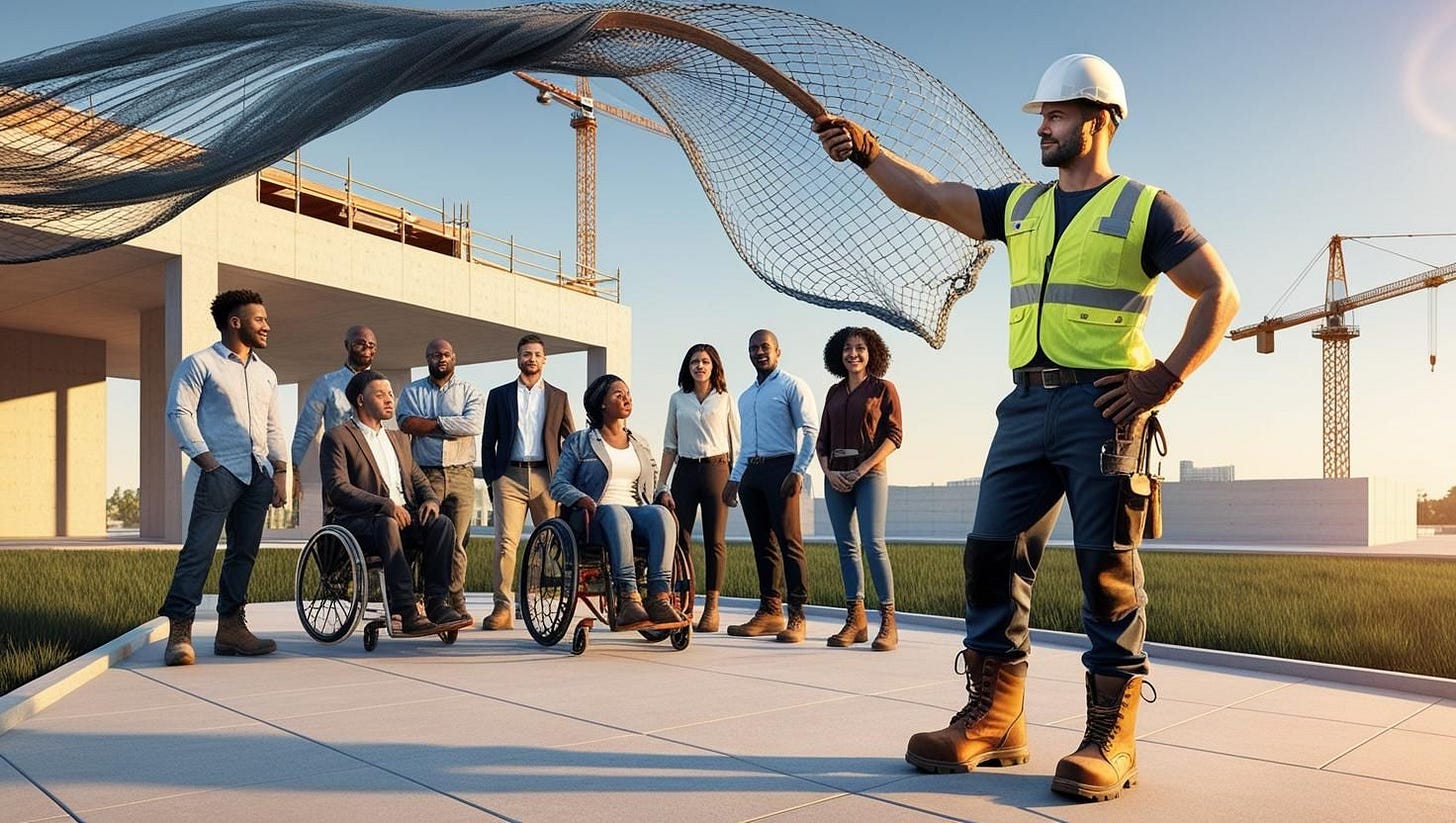Casting a wider net
Have you ever been to an Indian restaurant and had your order taken by a white waiter or waitress? If it transpired that the midwife allocated to see your wife or partner through childbirth was a man, would it give you pause?
These examples aren’t meant to suggest that racial and gender stereotypes work both ways. In fact, they highlight the ingrained expectations we hold about who belongs in certain roles.
There is substantial evidence suggesting that people tend to hire people who are similar to themselves. It’s a phenomenon known as homophily which comes from the Greek and which translates roughly as “love of the same”. To put it another way, there is a documented tendency for people to associate with those who are like them.
People naturally gravitate toward others who share similar backgrounds, experiences, or interests. In hiring, this can lead to preference for candidates who resemble the hiring manager or team in terms of gender, race, age, educational background and personality.
Many hiring managers prioritise "cultural fit," which can sometimes be a euphemism for preferring people who are similar to the existing team. It is for this reason that Irish construction companies indirectly favour Irish workers. It’s not necessarily active discrimination, but a reflection of how people tend to hire those they feel comfortable with, which often translates into hiring from the same background.
There is even a thing called The Halo Effect whereby, if a hiring manager sees a similarity between themselves and a candidate - for example, they both played the same sport in college - they may unconsciously assume the candidate would be a better fit.
You have probably guessed by now where I am going with this. But allow me to spell it out.
In employment terms, we often say that “you can’t be what you can’t see”. But it turns out, this is a double-edged sword. Not only are there precious few female, gay, transgender or ethnic minority role models in demolition and construction, the affinity bias of the sector means the gender, sexual and racial imbalance will remain for the foreseeable future.
A 2004 study found that CVs with white-sounding names received significantly more callbacks than identical resumes with black-sounding names. In many instances, this was a sub-conscious process that was not linked to racism. In all likelihood, that same bias exists today in the HR departments of demolition and construction companies across the land; favouring candidates called Steve and Bob over equally qualified applicants called Sarah and Belinda.
This is exactly where DEI - Diversity, Equity, and Inclusion - comes into play. If hiring tends to favour those similar to us, then naturally, the demographics of an industry will remain unchanged unless there’s a conscious effort to broaden recruitment practices.
Lots of people, not least the current resident at the White House, have had a lot to say about DEI of late. But I think that he and they are missing the point.
Some organisations misinterpret DEI as a box-ticking exercise, hiring based on identity rather than merit. But DEI isn’t about quotas or tokenism. But that was not the intention. It’s about expanding the talent pool and ensuring that qualified candidates from all backgrounds have a fair shot. Neither was it the intention to choose unqualified people over-qualified people, merely to achieve a prescribed gender and racial quota. No-one in their right mind really believes that we’re choosing black airline pilots or female brain surgeons that are less qualified than their white male counterparts, just to appear suitably woke.
In practice, DEI merely means broadening the potential recruitment net; to look beyond the narrow field of potential employees, and to consider those that are a bit less like ourselves.
Of course, there is an alternative that does not follow DEI principles. Some might argue the solution is to form entirely segregated firms: female-only demolition crews; LGBTQ+ plant hire firms; or black-owned construction businesses. Not only would that reinforce division rather than inclusion, it would also face resistance from an industry that already struggles with diversity.
But unless the demolition and construction sector is willing to accept that not all the best workers, supervisors and managers are white, male and almost scarily heterosexual, something’s got to give.
As it stands today, demolition and construction companies are looking out upon a vast ocean of potential employees. But they are casting their recruitment net right in front of themselves; fishing in familiar waters; fishing time and time again from the same shoal. We need to cast the net wider.
When all is said and done, it is vital that each industry recruits the best, most suitable, most experienced, most competent and most qualified to take on those vital roles in demolition and construction.
Unless we can bring ourselves to consider those that are not necessarily just like us, how do we know if we’re getting the best candidate or merely the most convenient one?





